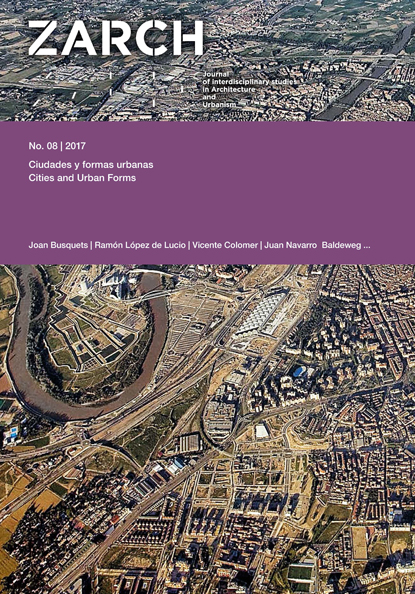Building the urban physiognomy of Berlin through the “well-ordered facade” of the Stadtbahn
DOI:
https://doi.org/10.26754/ojs_zarch/zarch.201782149Abstract
This article unfolds the analysis of the railway viaduct that crosses the German capital in an eastern-western direction. The aim is to decipher the urban design strategies used in the highly planned Stadtbahn, focusing on the configuration of Berlin’s urban physiognomy through a “well-ordered facade.” Thus exposing the morphologically linear construction associated with transport infrastructure, making clear the railway project design as a building-viaduct, imposing its architectural façade’s scenic effects on the surrounding public space. Through an in situ survey it is left clear that this building-viaduct, has the ability to break the “curse of border vacuums “, counteracting the destruction of neighboring areas that typically converts the segregated path into a physical and social border route. The intention is to clarify the value that architecture adds to these infrastructures originated as an accurate response to specific problems of time and distance, enlightening a multidisciplinary field, which becomes increasingly unavoidable, where the contribution of architects is still very much diffused.KEYWORDS: Transport infrastructure, Railway, Well-ordered facade, Building-viaduct, Urban physiognomy, Berlin.
Downloads
Download data is not yet available.
Downloads
Published
2017-10-02
Issue
Section
Topic papers
How to Cite
Temtem, F. (2017). Building the urban physiognomy of Berlin through the “well-ordered facade” of the Stadtbahn. ZARCH. Journal of Interdisciplinary Studies in Architecture and Urbanism, 8, 104-117. https://doi.org/10.26754/ojs_zarch/zarch.201782149





